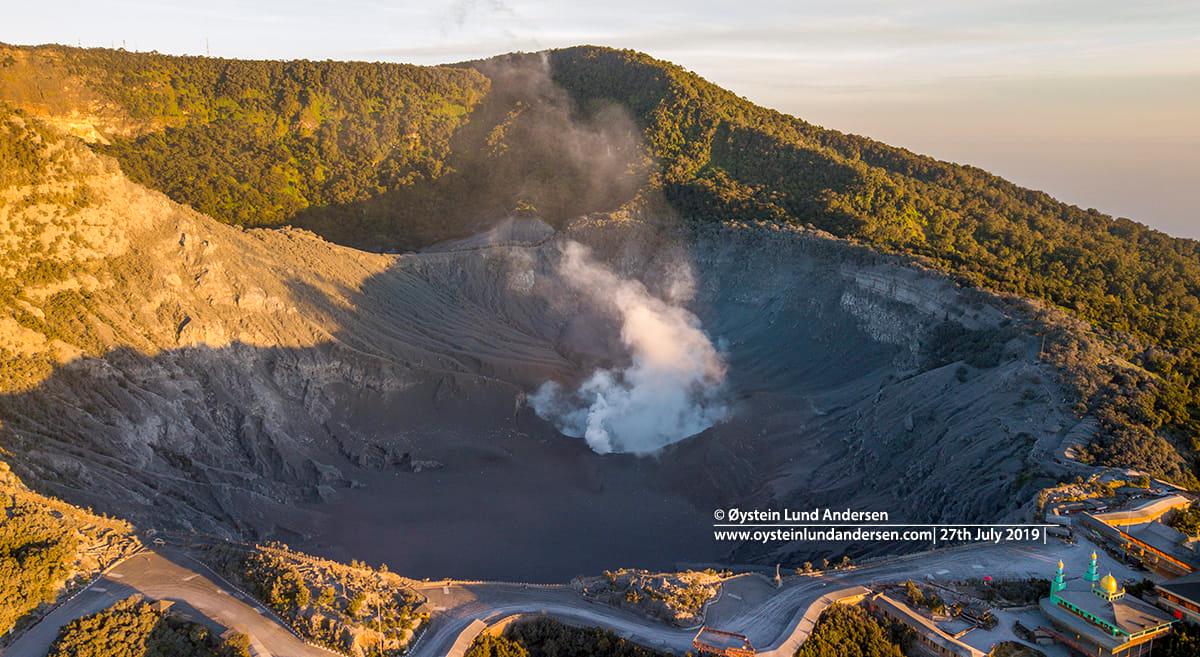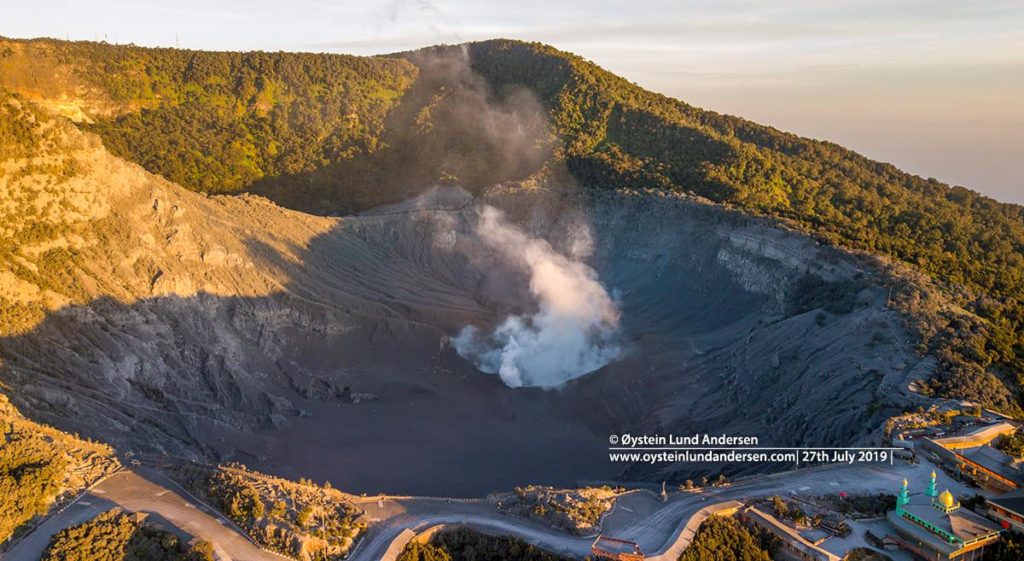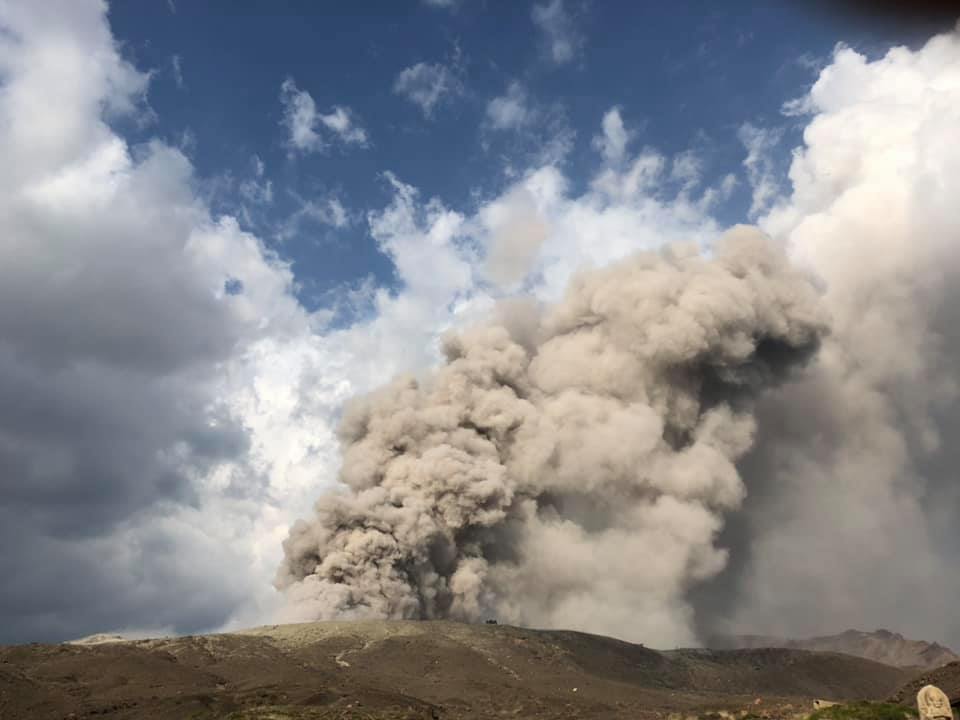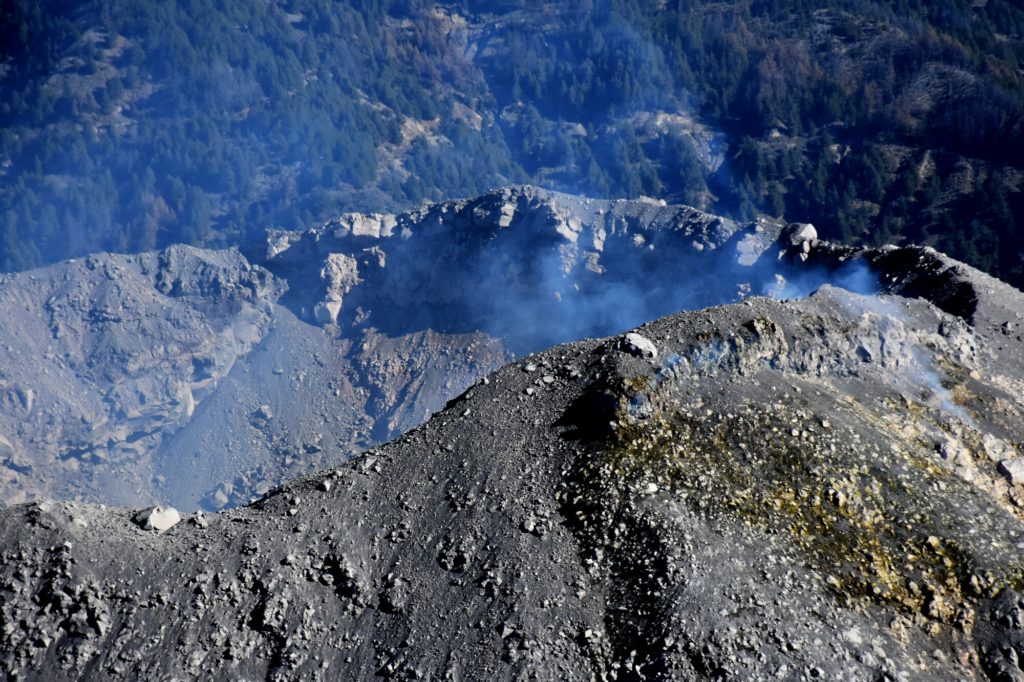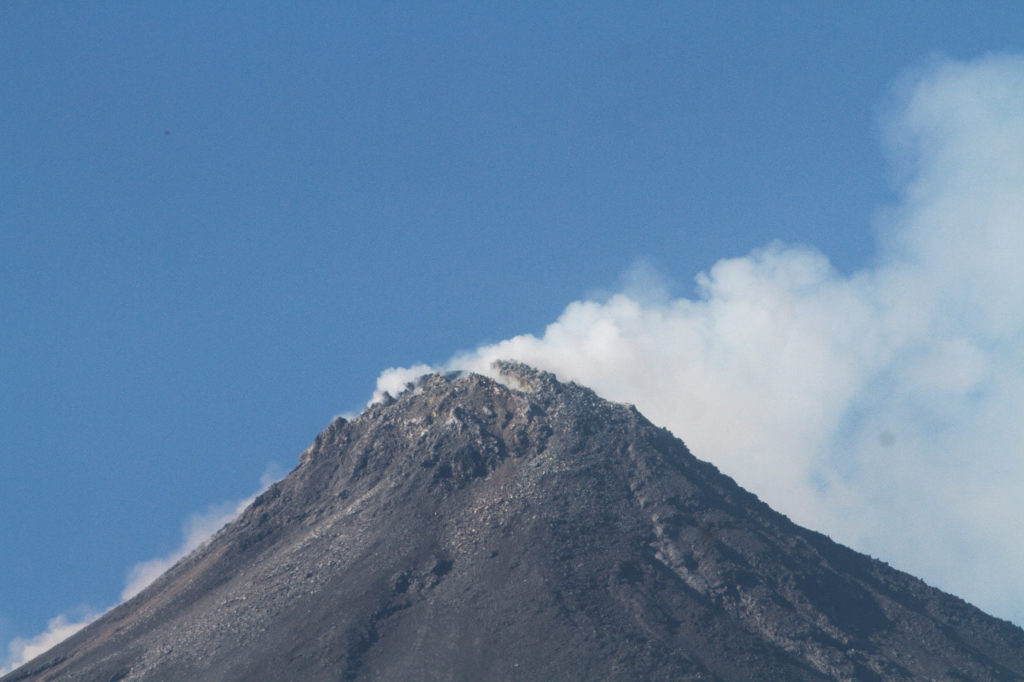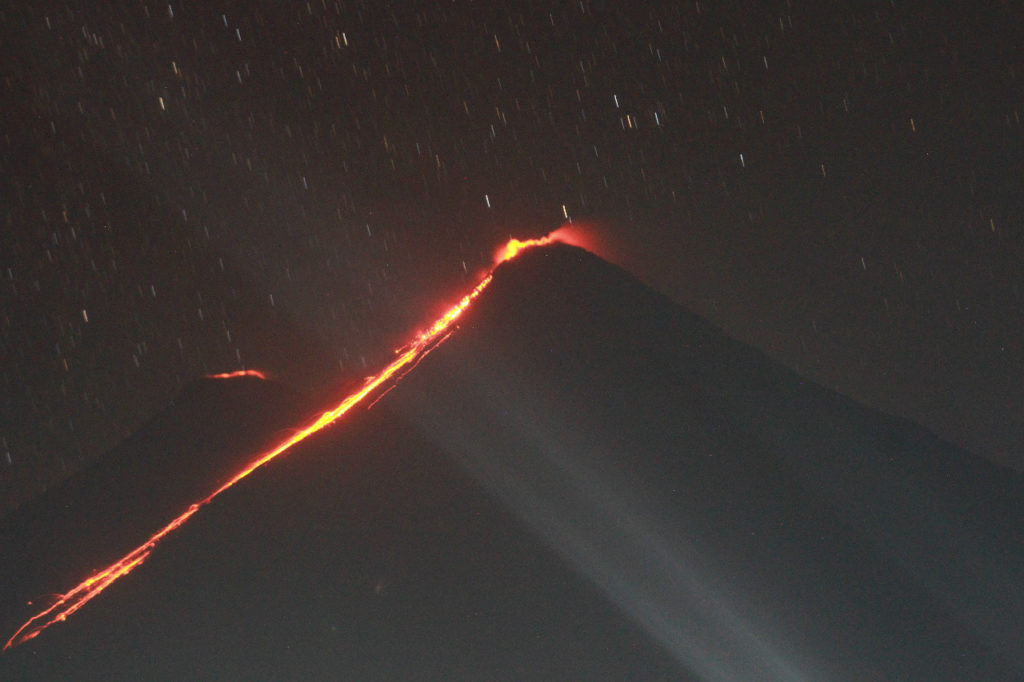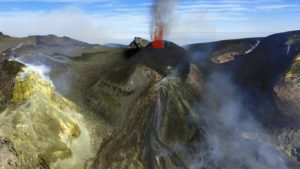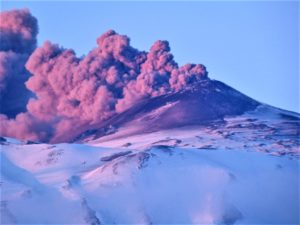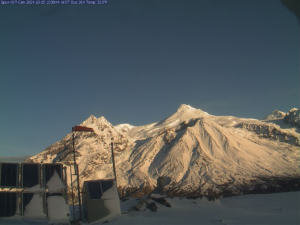July 27 , 2019.
Indonesia , Tangkuban Parahu :
VOLCANO OBSERVATORY NOTICE FOR AVIATION – VONA.
Issued: July 26 , 2019 .
Volcano: Tangkuban Parahu (263090)
Current Aviation Colour Code: ORANGE
Previous Aviation Colour Code: unassigned
Source: Tangkuban Parahu Volcano Observatory
Notice Number: 2019TPR01
Volcano Location: S 06 deg 46 min 12 sec E 107 deg 36 min 00 sec
Area: West Java, Indonesia
Summit Elevation: 6669 FT (2084 M)
Volcanic Activity Summary:
Eruption with volcanic ash cloud at 08h58 UTC (15h48 local).
Volcanic Cloud Height:
Best estimate of ash-cloud top is around 7309 FT (2284 M) above sea level, may be higher than what can be observed clearly. Source of height data: ground observer.
Other Volcanic Cloud Information:
Ash-cloud moving to northeast and south.
Remarks:
Seismic activity is characterized by continuous volcanic tremor.
Press release on the eruption of Mount Tangkuban Parahu, Friday, July 26, 2019 15:48:18.
Tangkuban Volcano Parahu is an active volcano located in the West Bandung Regency and Subang Regency region of West Java Province. The Tangkuban Parahu eruptions are usually phreatic eruptions from the Kawah Ratu crater. The last eruption occurred on October 6, 2013.
Monitoring data:
Visually, the last month of surface activity was dominated by puffs of smoke from the main crater (Kawah Ratu) from a height of about 15 to 150 meters from the bottom of the crater, from low to medium pressure, from white color and thin to thick intensity. The eruption occurred on July 26, 2019 at 15:48:18, the height of the ash column being observed at ± 200 m above the summit (± 2284 m above sea level). The ash column was observed thick, blackish-gray, leaning to the northeast and south. This eruption is recorded on a seismogram with a maximum amplitude of 50 mm (off scale) and a duration of ± 5 minutes 30 seconds.
At the seismic level, Mount Tangkuban Parahu activity is still dominated by earthquakes that reflect activity at shallow depths. After the eruption, the seismic recordings are dominated by continuous tremors of a maximum amplitude of 2 to 32 mm (dominant of 15 mm). The recorded tremor is related to the release of pressure in the form of puffs that have occurred so far.
In distortion, Tangkuban Parahu experienced moderate local inflation over the last month. The deformation data always indicate that the activity is still not stable.
Geochemically, on July 10, 2019, the content of volcanic gas, H2S and SO2 increased in the area surrounding the Ratu Crater. The volcanic gas content increases on July 13, 2019. Measurements of the concentration of these gases after 12 hours have tended to decrease again quite significantly. The latest gas measurement conducted on July 21, 2019 shows that the gas concentration is still fluctuating and tends to decrease.
Analysis:
Tangkuban Parahu still has the potential to erupt with tremors still registered.
The evaluation of the latest monitoring data indicates that the potential for major eruptions has not been observed.
The activity of Tangkuban Parahu is still in a state that is not yet stable and the activity can change at any time.
Potential dangers:
The most likely threat of danger currently consists of volcanic gas puffs, the concentrations of which fluctuate around the Ratu crater, which may endanger the health and safety of life of visitors, traders and surrounding communities if the trend of Concentrations of volcanic gas remains high. The phreatic eruptions and ash rains around the crater can potentially occur without any obvious volcanic symptoms.
Conclusion:
The activity level of Mount Tangkuban Parahu is still at level 1 (normal), a continuous evaluation is always done to anticipate the increase of the level of threat.
Source : Magma Indonésie ,
Vidéo : Taupik Senjaya
Japan , Asosan :
Minor volcanic eruption observed on Mt. Aso in southwestern Japan.
A small eruption was observed Friday on Mt. Aso in southwestern Japan, spewing smoke as high as 1,600 meters, the weather agency said.
The eruption occurred at 7:57 a.m. at the No. 1 crater of Mt. Aso’s Nakadake, which is 1,506 meters above sea level, according to the Japan Meteorological Agency. There were no immediate reports of injuries.
It was the latest in a series of small-scale eruptions at the volcano in Kumamoto Prefecture since April. No volcanic cinders were detected but the agency warned of volcanic gas.
The agency raised Mt. Aso’s volcanic alert level to 2 on a scale of 1 to 5 in April, urging people not to approach the crater. Local municipalities have restricted entry to areas within 1 kilometer of the crater.
Source : KYODO NEWS.
Photo : Chihiro Fujii , 03 mai 2019.
Italy , Stromboli :
On the evening of 24 July 2019, video footage of the eruption of Stromboli volcano, Aeolian Islands, was acquired. The eruption began on 3 July 2019 with a paroxysmal explosion; subsequently, the eruption changed into continuous Strombolian activity at the summit craters (>750 m above sea level), accompanied by continuous lava overflows extending down the southern portion of the Sciara del Fuoco.
Video footage by Igor Fedele (Mediterranea Trekking of Messina) who kindly granted the use rights to the National Institute of Geophysics and Volcanology (INGV), for scientific, educational and informative purposes.
Source : INGV Vulcani .
Mexico , Colima :
Weekly technical bulletin of the activity of the volcano Colima, Date: July 26, 2019 Bulletin n ° 131
Seismic activity:
Last week, 19 high frequency (HF) events, 1 long period (LP) event, 10 landslides and 18.3 min of low amplitude trenches were automatically recorded. 4 lahars were also recorded in the Montegrande canyon.
Visual observations:
Intermittent emissions of steam and gas mainly from the northeast side of the crater continue to be recorded during the reporting period. Visibility this week allowed to observe the volcano in very short periods. The lahars who descended the Montegrande ravine were also observed using surveillance cameras. When the cloud allowed it, the fixed thermal camera located to the south of the volcano detected thermal anomalies related to the fumaroles activity during the last week.
Geochemistry:
No SO2 flow measurements were performed during the last week.
Remote perception:
No thermal anomalies detected by the MIROVA satellite system were observed during the last week.
Diagnostic :
The volcano maintains an explosive activity of low intensity. The occurrence of these events indicates that the gas probably associated with the moving magma has reached surface levels. This activity can continue and increase in intensity over the following days or weeks. The staff in charge of monitoring the volcano monitors any changes and developments in the activity.
Source : Ucol.
Photo : Protección Civil Jalisco Uepcbj.
Indonesia , Karangetang :
Level of activity at Level III (SIAGA). G. Karangetang (1,784 m above sea level) has started to erupt again since November 25, 2018.
Since yesterday and until this morning, the volcano was clearly visible until it was covered with fog. It was observed that the smoke from the crater was white, of medium to thick intensity and was about 300 meters above the peak.
The seismographs of July 26, 2019 recorded:
63 avalanche earthquakes.
9 earthquakes of explosions.
5 hybrid earthquakes
2 shallow volcanic earthquakes
7 distant tectonic earthquakes.
Recommendations: Since March 26, 2019 at 12:00, the technical recommendations are as follows: –
The public and visitors / tourists should not approach, climb or move in the 2.5 km danger zone around the Kawah Dua (North Crater) and Main Crater (South) peaks. and in the sectoral expansion zone, from Dua Crater at West-Sea in the North, up to 4 km, an area between Kali Batuare and Kali Saboang.
People living around the rivers that come from the summit of Mount Karangetang must be prepared for the potential threat of lahars and sudden floods that may spread to the coast.
VONA: VONA last sent the YELLOW color code, issued November 25, 2018 at 13:32, for volcanic ash emission at an altitude of approximately 2,284 m above sea level or approximately 500 m above the summit, the wind blowing to the east.
Source : PVMBG.
Photos : Wwwexplorekarangetangblogspotcom via Shérine France.

